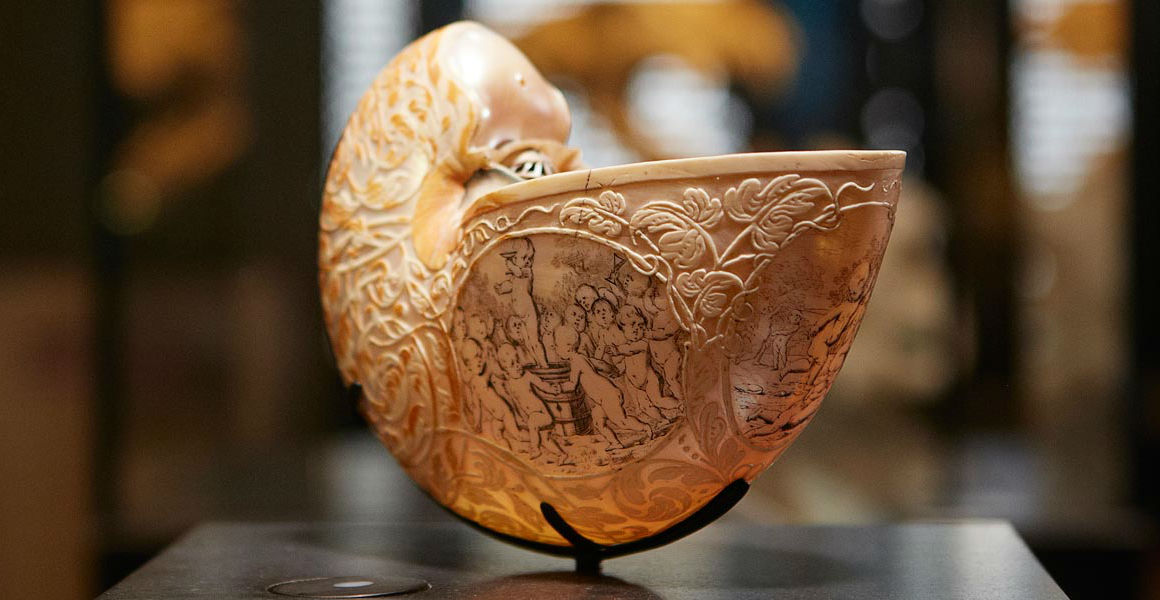
Sir Hans Sloane’s nautilus shell on display in our Treasures Gallery.
undefinedTwelve highlights of our Treasures Gallery
Erin McEniery
Explore 12 highlights from our Treasures Gallery spanning 4.5 billion years of Earth’s history.
A royal lion skull, a Moon rock, a famous gorilla, even Darwin’s pigeons: uncover some of the most extraordinary specimens we care for.
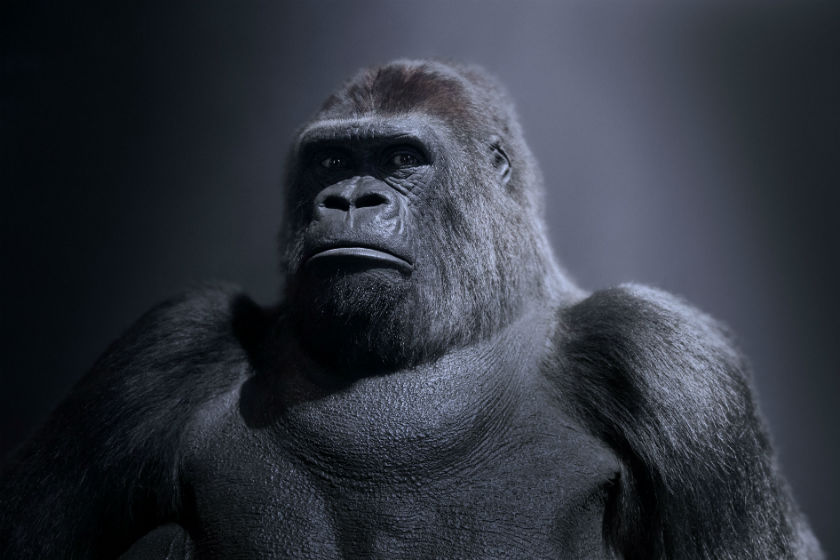
1. Guy the gorilla
London Zoo’s much-loved former resident, Guy, a western lowland gorilla, Gorilla gorilla gorilla, remains as majestic and iconic as he was in his time. Guy stands proudly at the right-hand entrance of the Treasures Gallery, at the top of Hintze Hall’s grand staircase.
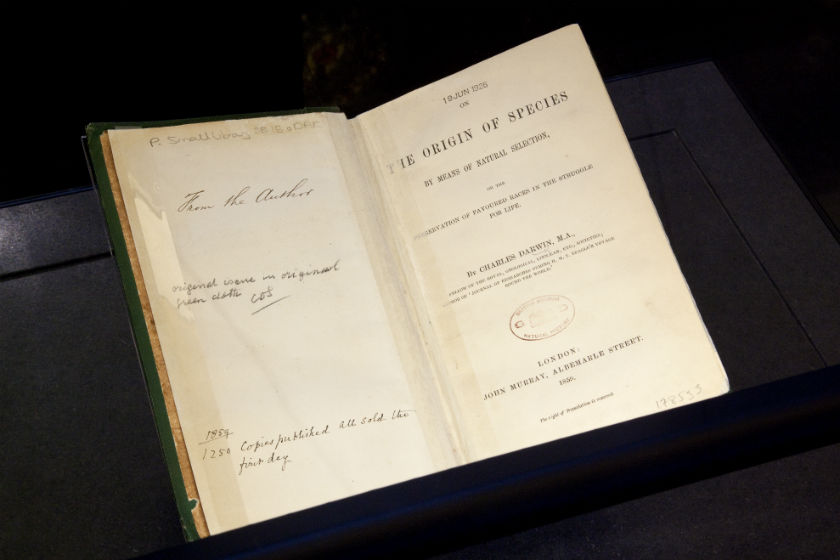
2. On the Origin of Species
Charles Darwin’s On the Origin of Species is arguably the most important book in biology, in which he describes his theory of evolution by natural selection.
Our library holds the world’s largest concentration of Darwin works. It has 478 editions of On the Origin of Species in 38 languages and in Braille.
This example is a rare first edition, published in 1859.
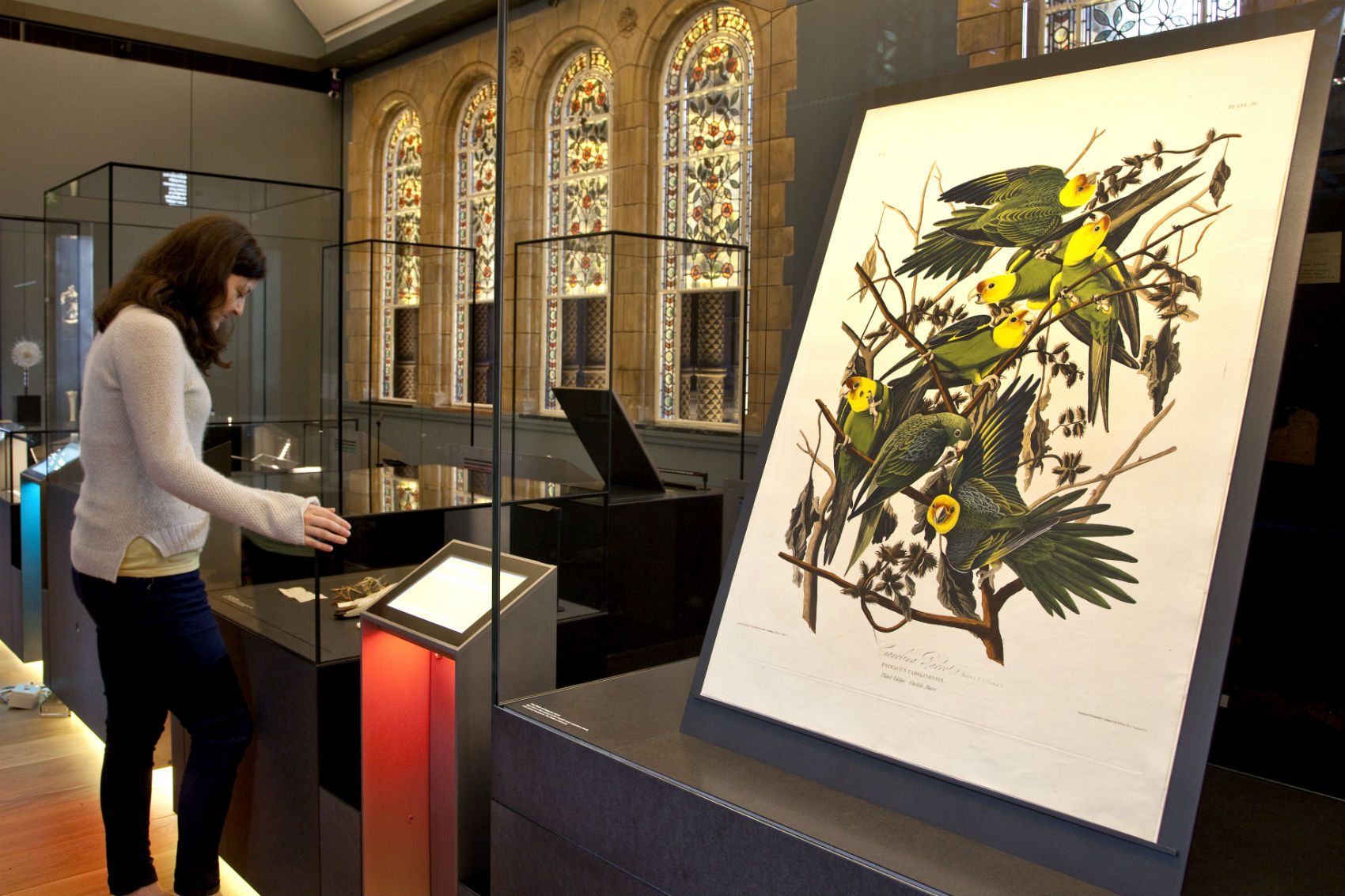
3. The Birds of America
This one-metre page is from one of the world’s most expensive books, John James Audubon’s The Birds of America (1827–1838). There are only about 120 complete four-volume copies in the world, each containing 435 colour plates.
We change the page on display each month so the exquisite illustrations don’t fade from light exposure.
Discover more about The Birds of America book and view a selection of illustrations online >
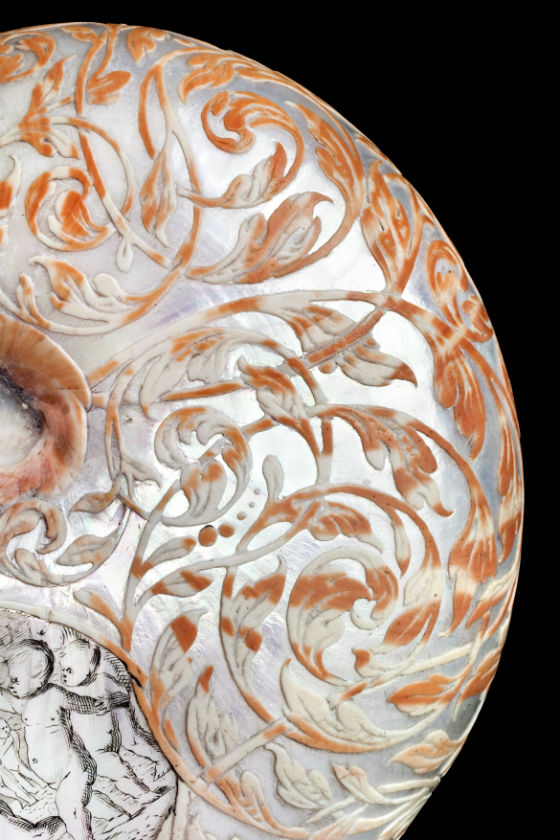
4. Hans Sloane’s nautilus shell
It’s easy to imagine this beautifully carved shell was one of Sir Hans Sloane’s favourite specimens. It’s also the only carving from Dutch artist Johannes Belkien bearing his full signature. Sloane believed the embellishment only improved on the shell’s natural perfection.
Nautiluses have changed so little from their 350-million-year-old ancestors. They were once some of the largest sea predators, but now need protection from humans.
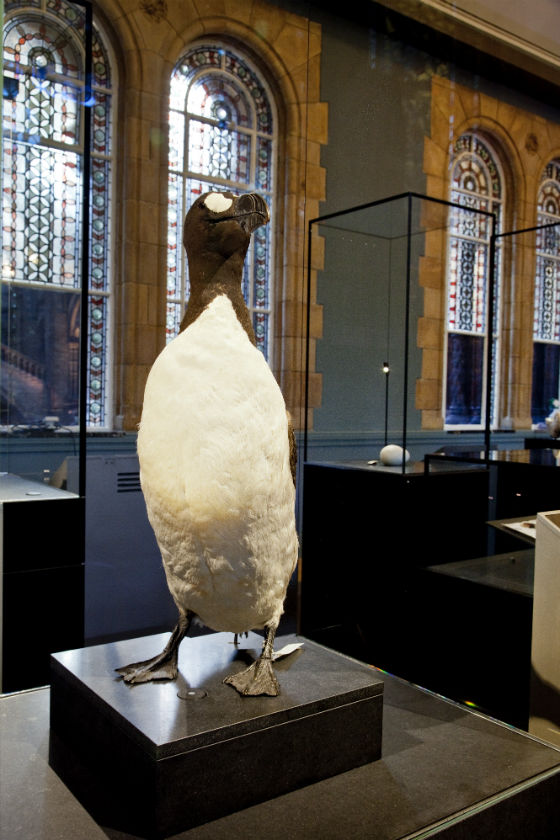
5. Great auk
The great auk, Pinguinus impennis, is one of the most powerful symbols of the damage humans can cause.
The species became extinct not through habitat loss but from centuries of intense exploitation. They were easy prey for hunters and so were slaughtered in huge numbers until the late 1700s for their meat, eggs, feathers and oil.
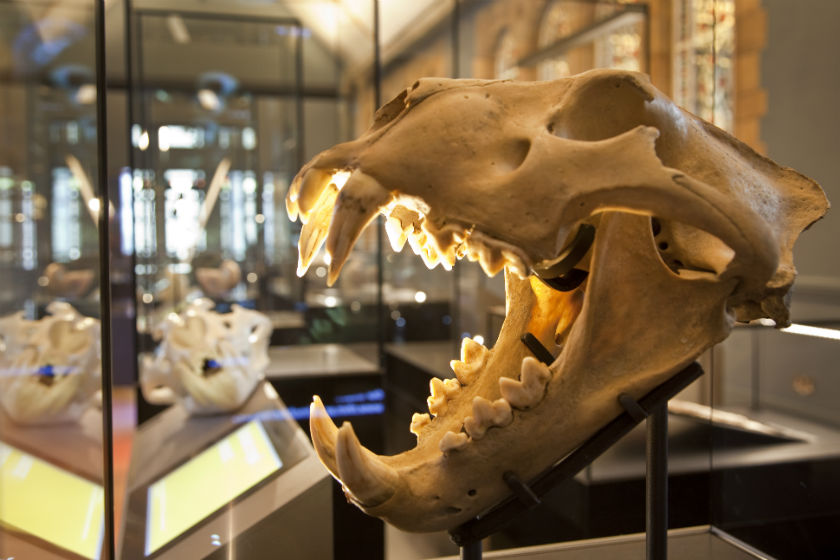
6. Barbary lion skull
This lion was the jewel of the royal zoo in the Tower of London around 700 years ago. It’s also the oldest lion found in the UK after the extinction of native wild lions.
Workmen digging up the in-filled moat around the Tower in 1937 were surprised to find this extraordinarily well-preserved skull. Purebred North African Barbary lions are now extinct in the wild.
Find out about barbary lions and what we’ve learned from the specimens we care for >
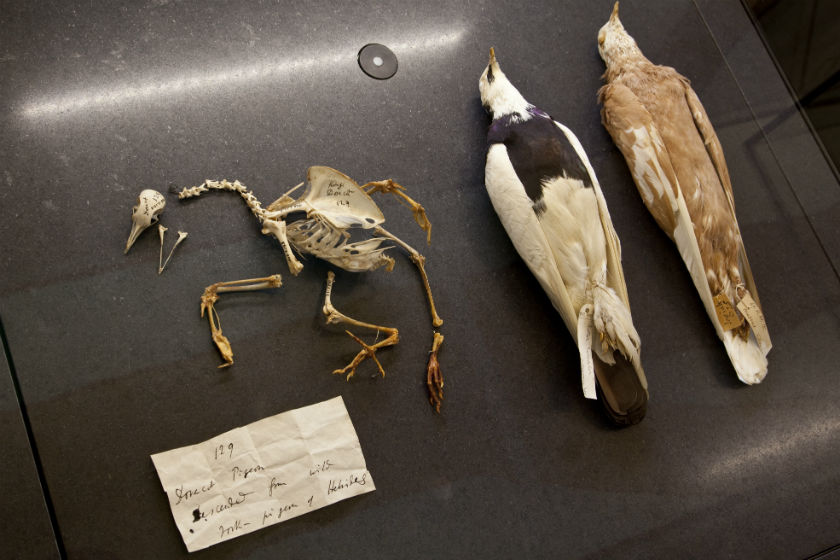
7. Charles Darwin’s pigeons
Galápagos finches, commonly known as Darwin’s finches, are the best-known species from Darwin’s work, often credited as the inspiration for his ideas on evolution. But as famous as these finches may be, even more significant to his research were pigeons.
Darwin bred pigeons in his garden as an experiment. By crossing birds with different characteristics, he could generate different offspring. Through this artificial selection, he gathered valuable evidence for his theory of evolution by natural selection.
Read more about Charles Darwin, history’s most famous biologist >
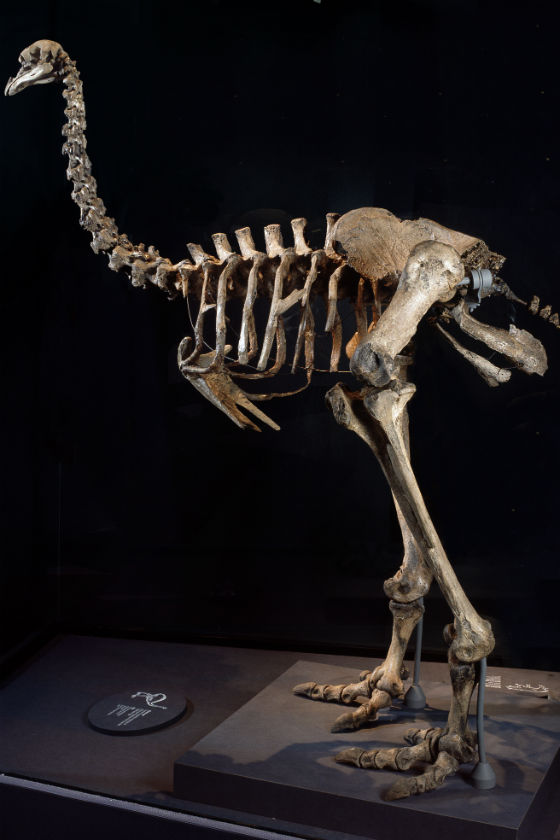
8. Moa bone fragment and skeleton
On the left-hand entrance to the Treasures Gallery you’ll come up against the skeleton of a giant bird from New Zealand, the moa, Dinornis robustus.
In 1839, Richard Owen – the founder of the Natural History Museum – analysed a small bone fragment, comparing it with bones from 14 other species, including humans, kangaroos and even a giant tortoise. He made the bold prediction that it belonged to an enormous, extinct flightless bird.
Four years later, the curious bird was identified when more bones were found.
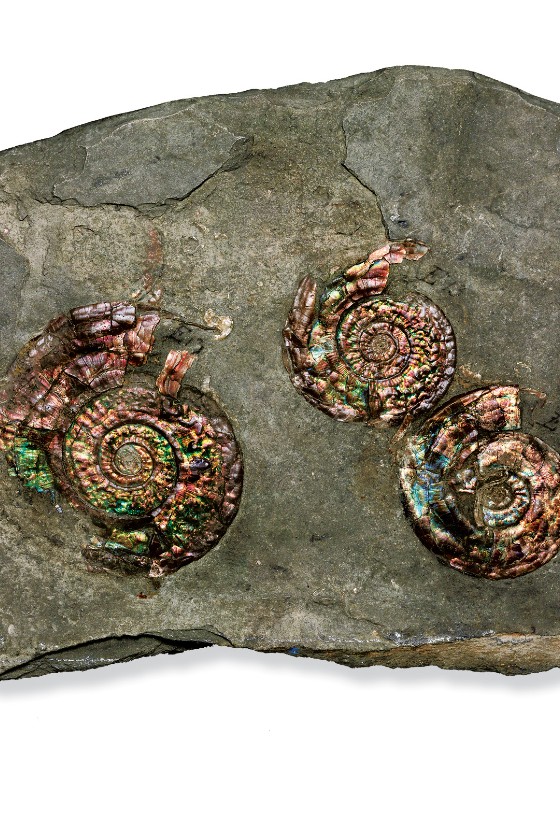
9. William Smith’s ammonites
These specimens from Smith’s personal collection are Britain’s oldest species of ammonite, extinct molluscs related to living squid that jet propelled through the ocean more than 65 million years ago.
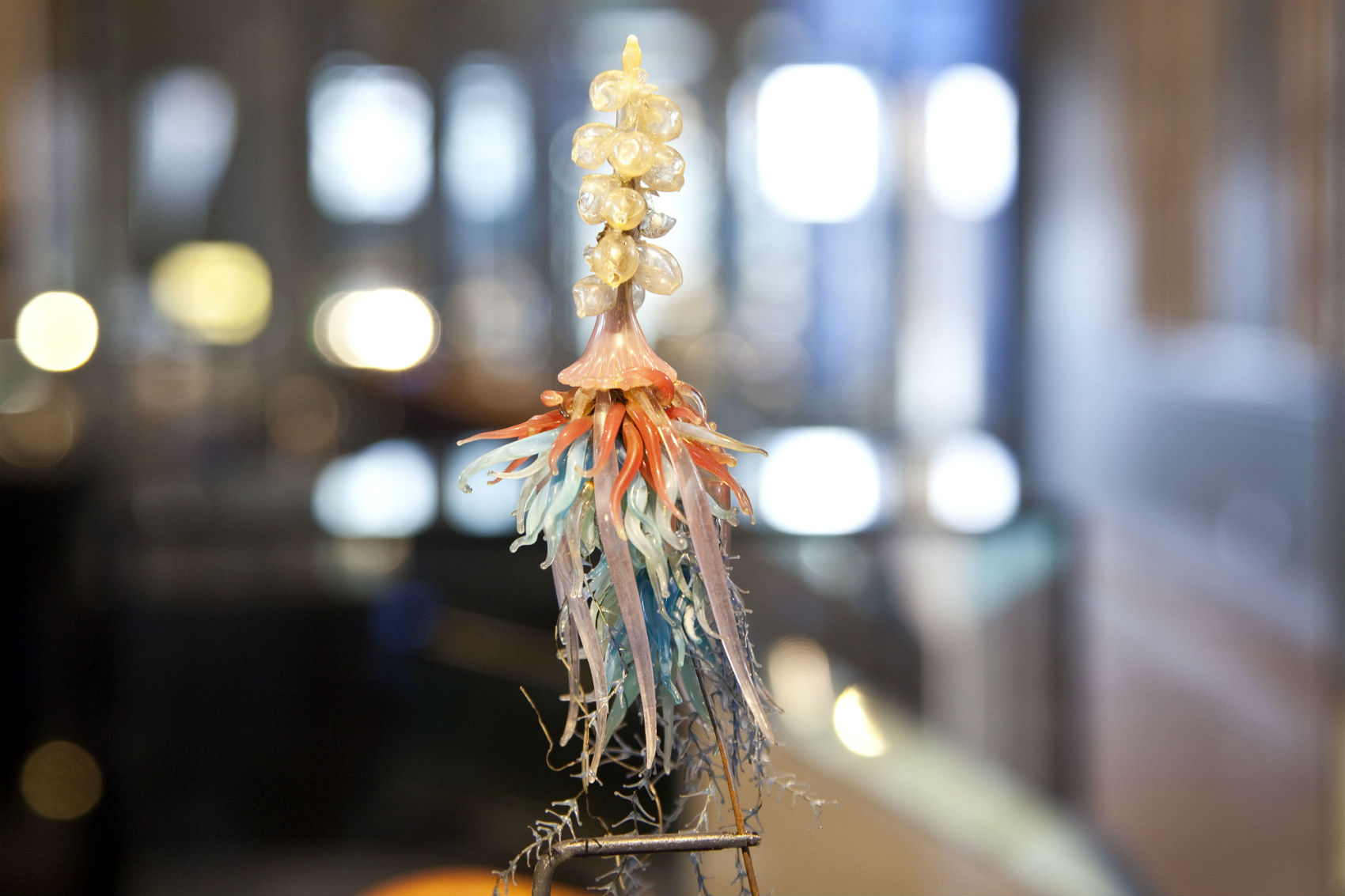
10. Blaschka glass models
These models of marine invertebrates seem impossibly detailed, with every eye and tentacle rendered perfectly in glass. The fragile artworks were made by father-and-son team Leopold and Rudolph Blaschka from 1876 to 1889, in a small room at home with basic equipment.
They used techniques no one has since been able to replicate.
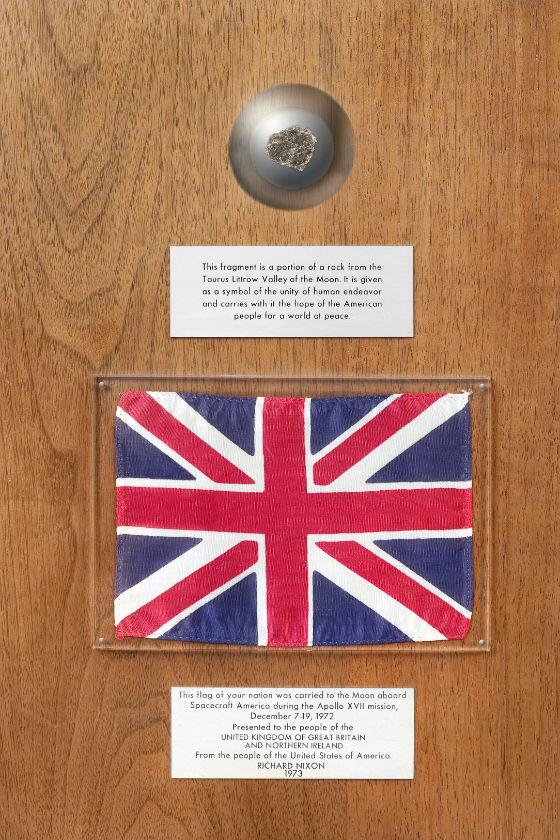
11. Moon rock
Astronauts from the USA’s Apollo Moon missions are the only humans to have left Earth and landed on another celestial body. NASA owns the vast majority of Moon samples they collected.
After the final mission – Apollo 17 in 1972 – President Nixon gave fragments as goodwill gestures to 135 countries around the world, including the UK.
Learn more about this specimen and how the Museum’s history is linked with NASA’s Apollo missions >
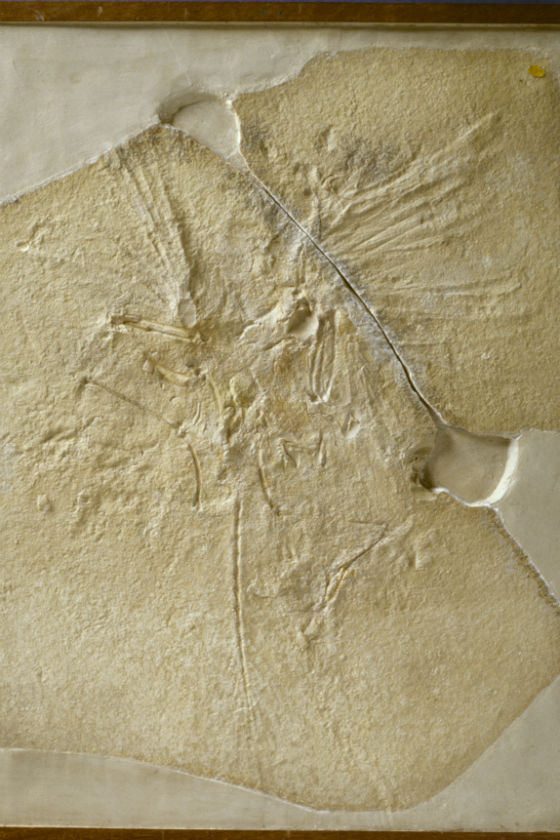
12. Archaeopteryx fossil
Scientists now know that dinosaurs evolved bird-like characteristics long before the appearance of Archaeopteryx – the Late Jurassic fossil sometimes referred to as the earliest bird. This is the first skeleton specimen ever found and one of the most scientifically important fossils we look after. This is the type specimen of the species, the one to which all others of its kind are compared.
A cast model can also be found in our Birds Gallery.
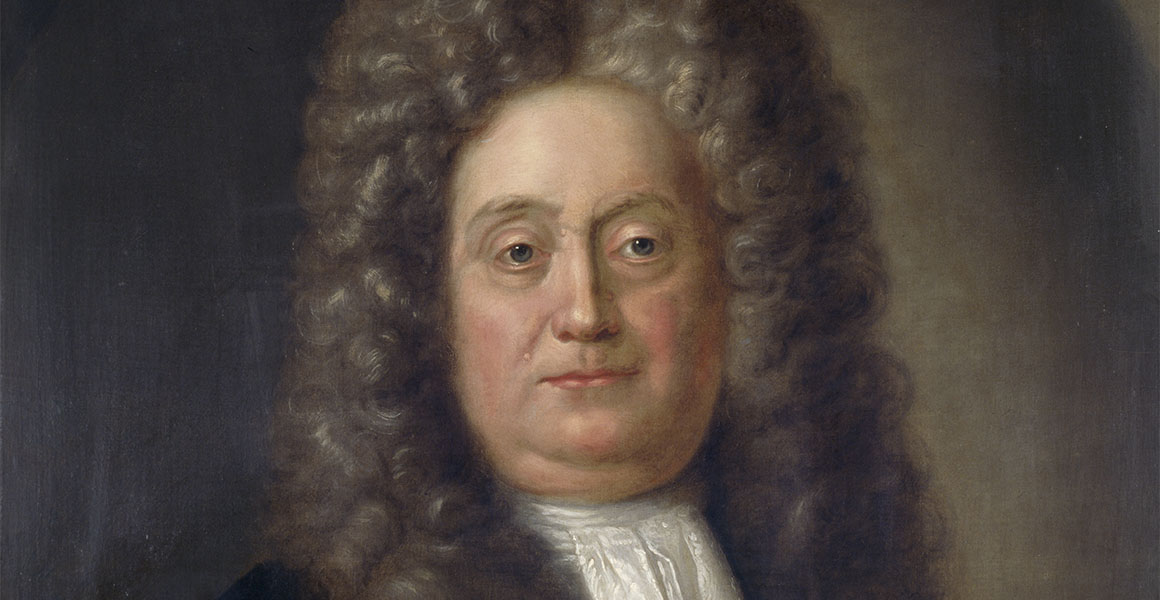
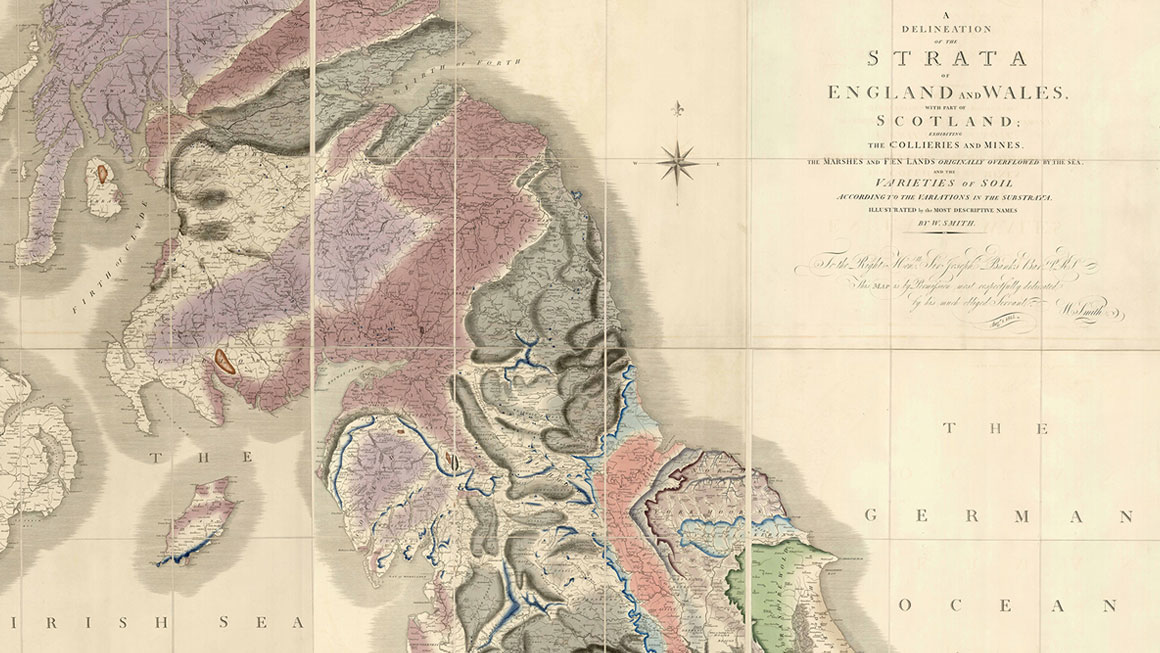
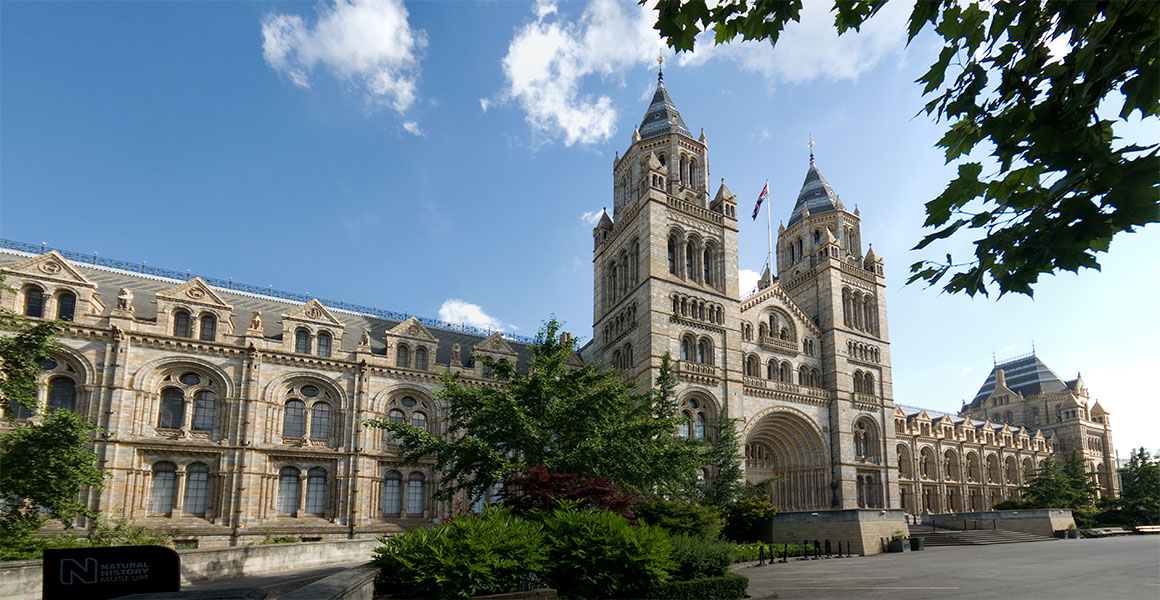
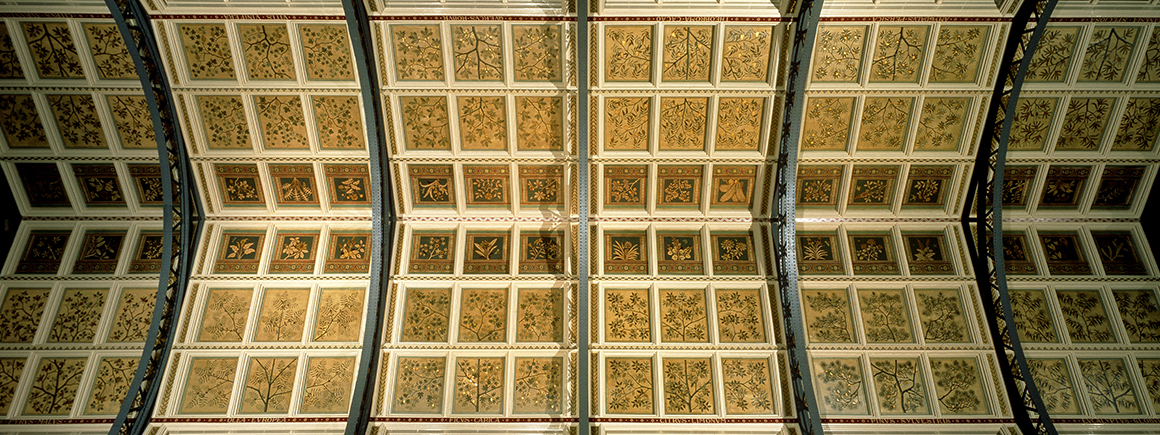
Don't miss a thing
Receive email updates about our news, science, exhibitions, events, products, services and fundraising activities. We may occasionally include third-party content from our corporate partners and other museums. We will not share your personal details with these third parties. You must be over the age of 13. Privacy notice.
Follow us on social media